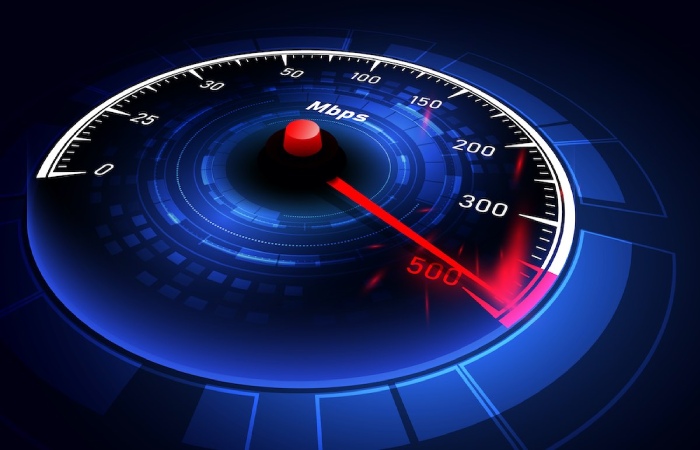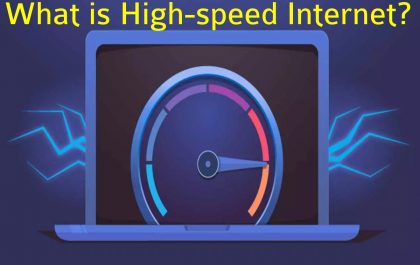Table of Contents
High-Speed Internet
High-velocity Internet, also referred to as broadband Internet, is defined via the Federal Communications Commission (FCC) as Internet get entry to of at the least 200 kilobits according to second (Kbps). Still, no longer extra than 60 megabits ( Mbps) in step with 2d. Broadband Internet speeds permit customers to take gain of technology, including video conferencing on computers, voice calls on computers, and amazing audio and video streaming. As of 2011, the main styles of broadband available in the United States consist of DSL, cable, satellite tv for pc, fibre optics, and mobile broadband.
What is excellent High-Speed Internet?
There is no final answer to this question. In universal, faster is always better when it comes to internet speed. But speed often arises at a price, so using an Internet connection that provides excessive speed can be a waste of money.
Depending on the type of action the Internet connection makes use of, here are some guidelines for a minimal velocity that should be enough for your wishes.
Video streaming — Depending at the type of video, you will want three Mbps for standard video, 5Mbps for HD, and 25 Mbps for 4k Ultra HD.
Music flowing — A speed of 2 Mbps would be enough for streaming music playback.
Gaming — Gamers should have speeds up to 10 Mbps for the best performance.
Email — You’ll need speeds of 0.5 — 5 Mbps to access your Gmail and Facebook pages.
Skype or video calls — You’ll need zero.5 Mbps for fashionable calls and 1.Five Mbps in case you’re using HD.
Download massive documents — If you’re downloading huge HD movie documents or torrents, you need the quickest connection possible, aiming for as much as 50 Mbps.
If you’re in the dependancy of importing many files, you furthermore may need to make sure your upload pace is good enough. As it defaults to being slower than the download speed, you can want to touch your Internet Service Provider (ISP) to increase your connection’s upload velocity.

How to test High-Speed Internet?
The nice manner to know how fast your Internet runs is to test it. There are numerous motives why you may need to take an Internet Speed Test, along with:
- planning for usage that fits your available speed;
- considering whether an upgrade requires for new activities such as online gaming;
- verifying that you are getting the rate you expect with the Internet package you have purchased through your ISP.
If you’re wondering how to test your Internet speed, several tests are available. Here are some rules to follow to get the most accurate results from an Internet speed test.
- Reboot the modem and router before starting the test.
- Please refrain from using the Internet for any other activity while checking your Internet speed. It includes turning off mobile devices, which often automatically connect to the network.
- Reboot the computer or device that will use to perform the test.
- Clear your browser cache. If you plan to test multiple times, you will do this before each set. Speed tests are based on downloading and uploading files and may not be accurate if files are cached.
- Use an HTML5-based speed test instead of a Flash-based app.
By following these steps earlier than you start your Internet speed check, you may get a extra accurate check that reflects the actual speed of your connection. A quality test will show download speed, upload speed, and ping speed.
How to Increase High-Speed Internet?
If you are not satisfied with your Internet connection speed, several remedies can try to resolve the issue.
Survey your network — Using a quality network monitoring tool like Netspot will allow you to test a wireless network to identify where potential problems may exist. Running an active scan returns visualisations that enable you to analyse upload and download speeds and wireless transmission speeds. The information obtained through the analysis can help you decide what factors may slow down your Internet speed.
Upgrade your router — A dual-band router gives you a 2.4 GHz and 5 GHz network in a single unit.
Switch to a wired connection — Wired connections will provide faster and more consistent Internet speed but may cost more and offer less flexibility than a wireless solution.
Eliminate signal interference — Your WiFi router needs to be where microwaves or other devices won’t interfere with your signal. Locate your router with a limited impact from walls and furniture that can degrade the signal.
Invest in an extension range — These devices are relatively inexpensive and can be instrumental in achieving high Internet speeds throughout the desired coverage area.
Limit the number of connections — You may be causing congestion by having too many devices running simultaneously.
Conclusion
You now know about Internet speeds and how you can test and potentially improve your connection. If you’re not satisfy with the rate at which your online activities are happening, it might be time to troubleshoot.
Also Read: How to Create a Brand Ambassador Program?
What is High-speed Internet?
Related posts
Featured Posts
What is High-speed Internet?
High-Speed Internet High-velocity Internet, also referred to as broadband Internet, is defined via the Federal Communications Commission (FCC) as Internet…
What is Bitcoins-Era?
Bitcoins-Era is a trading podium that uses a sophisticated artificial intelligence system capable of analyzing the market and autonomously buying…


